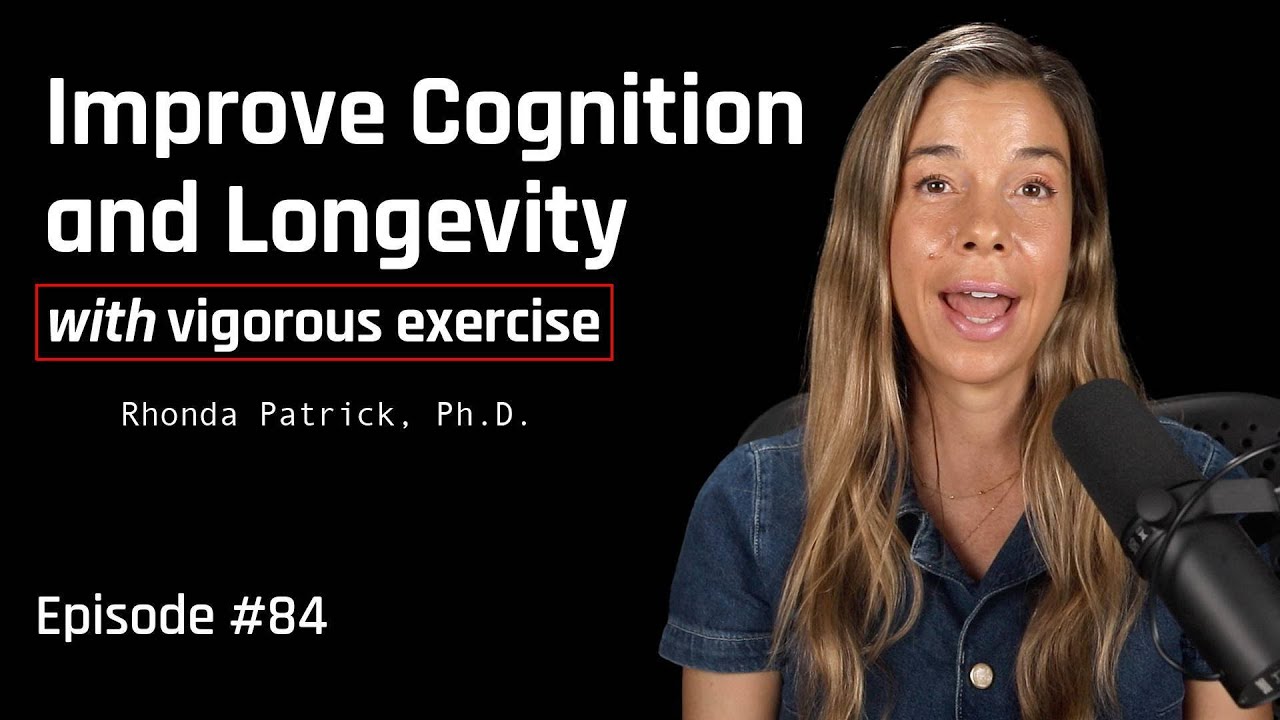Zone 2 Training: Dose, Frequency, and Duration | Iñigo San-Millán, Ph.D. & Peter Attia, M.D.
Summary
TLDRIn this podcast, the host discusses the importance of steady-state, sustained cardio training for individuals new to this type of exercise. The expert emphasizes the need for a structured program, suggesting a frequency of three to four days a week with one to one and a half hours per session. They also highlight the significance of duration, starting with shorter sessions and gradually increasing to the target duration. The conversation touches on the challenges of maintaining consistent intensity during outdoor activities compared to indoor training on a trainer.
Takeaways
- 🏃♂️ High-intensity training alone is not sufficient for optimal health benefits; a combination of different types of exercise is recommended.
- 👨⚕️ The speaker emphasizes the importance of steady-state, sustained cardio alongside strength training for a well-rounded fitness program.
- 📈 For beginners in steady-state cardio, the training program should ideally be structured to include three to four sessions per week.
- ⏱ Each session should aim for a duration of one to one and a half hours, which can be adjusted based on the individual's fitness level and time availability.
- 🚴♂️ The choice of exercise, such as running, walking, cycling, rowing, or swimming, can be personalized based on individual preferences and needs.
- 🔧 Strength training should complement cardio, ideally taking up about half of the total weekly exercise time.
- 📊 The speaker shares insights from laboratory studies, indicating that training frequency and duration significantly affect mitochondrial and metabolic adaptations.
- 📉 Training once a week may not be enough to see improvements, while two days might only maintain current fitness levels without significant progress.
- 🛣️ Consistency is key; three to four days of training per week are suggested for noticeable and sustainable health benefits.
- 🚴♀️ Using a trainer can help maintain a steady workout by isolating variables like wind and hills, which might be difficult to manage outdoors.
- ⚠️ The podcast is for informational purposes only and should not replace professional medical advice or treatment.
Q & A
What is the main topic discussed in the podcast transcript?
-The main topic discussed is the importance and structuring of steady-state, sustained cardio training for individuals new to this type of exercise.
Why is high-intensity training not sufficient according to the speaker?
-The speaker mentions that high-intensity training is not sufficient because it lacks the steady-state, sustained cardio aspect that can lead to important mitochondrial and metabolic adaptations.
What is the recommended frequency for this type of training?
-The recommended frequency for this type of training is ideally between three to four days a week.
What is the suggested duration for each training session?
-The suggested duration for each training session is one to one and a half hours.
Why is strength training also important according to the speaker?
-Strength training is important because it contributes to overall fitness and health, and the speaker mentions that it should ideally take up half of the total weekly exercise time.
How does the speaker suggest starting the training for beginners?
-The speaker suggests starting with shorter durations such as 20 to 30 minutes and gradually increasing to the target of one hour to one and a half hours as the individual's fitness improves.
What are the potential benefits of steady-state, sustained cardio training mentioned in the transcript?
-The potential benefits include improved mitochondrial function, increased fat oxidation, and enhanced lactate clearance capacity.
Why does the speaker mention that one hour of this type of training can be effective?
-The speaker states that one hour of steady-state, sustained cardio can lead to significant mitochondrial and metabolic adaptations, making it an efficient and effective training duration.
What is the speaker's opinion on the use of a trainer for biking?
-The speaker finds using a trainer efficient because it allows for a more controlled and consistent workout, despite acknowledging that it might feel like a less enjoyable experience compared to being outdoors.
How does the speaker address the issue of not being able to maintain a constant level while exercising outdoors?
-The speaker acknowledges the challenges of outdoor training, such as starting and stopping, wind, and hills, and suggests that using a trainer can help isolate these variables for a more consistent workout.
What is the disclaimer provided at the end of the transcript regarding the podcast's content?
-The disclaimer states that the podcast is for general informational purposes only and does not constitute professional health care services or medical advice. It also mentions that the content should not be a substitute for professional medical advice, diagnosis, or treatment.
Outlines

Esta sección está disponible solo para usuarios con suscripción. Por favor, mejora tu plan para acceder a esta parte.
Mejorar ahoraMindmap

Esta sección está disponible solo para usuarios con suscripción. Por favor, mejora tu plan para acceder a esta parte.
Mejorar ahoraKeywords

Esta sección está disponible solo para usuarios con suscripción. Por favor, mejora tu plan para acceder a esta parte.
Mejorar ahoraHighlights

Esta sección está disponible solo para usuarios con suscripción. Por favor, mejora tu plan para acceder a esta parte.
Mejorar ahoraTranscripts

Esta sección está disponible solo para usuarios con suscripción. Por favor, mejora tu plan para acceder a esta parte.
Mejorar ahoraVer Más Videos Relacionados

Top 5 Exercises to Boost Brain Health

HIIT vs. Zone 2 Training: What Do You Need? | Alyssa Olenick | The Proof Clips EP #306

The Longevity & Brain Benefits of Vigorous Exercise | Dr. Rhonda Patrick

The Most Effective Type of Cardiovascular Training

Different Types Of Cardio Exercises Workouts - What Is Cardio Exercise - Calculating Your Max Heart

The Most Underrated Cardio Routine For Fat Loss
5.0 / 5 (0 votes)
